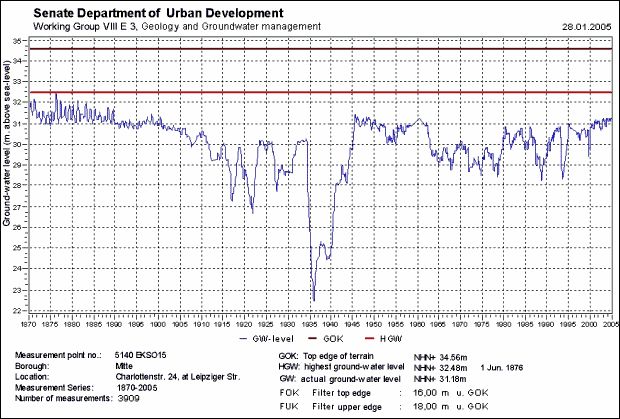The Berlin groundwater measurement network grew rapidly: By 1937, measurements were already being taken at more than 2,000 measurement points). At present, following a measurement network optimization in the city area, the State Groundwater Service operates 947 measurement points which are screened into the five different aquifers. The measurement points are equipped with automatic data loggers, and provide daily measurements. The Berlin Water Utility takes monthly measurements at 1,123 groundwater measurement points, predominantly in Berlin. For the most part, these are screened into the main aquifer (2nd GWL.)
Additional the Berlin Water Utility and the Brandenburg state authority for environment provide groundwater measurement data for the Berlin area and the surrounding / hinterland, for the most part monthly taken. If groundwater has a direct connection to surface water (effluent situation) additional level data from surface water measurement points are used.
The present map incorporates measurements from 1,733 groundwater measurement points and 28 surface water levels, which are screened exclusively into the main aquifer (2nd GWL), for the Panke Valley groundwater aquifer (first GWL) on the Barnim plateau 33 groundwater measurement points and 5 surface water levels. At the measurement points which are measured daily, the value of May 15th 2004 was used; at the others, the nearest monthly value to this day was used.
The distribution of the measurement points is irregular: The measurement network is densest in the city center and in the immediate intake areas of the waterworks, and is thinner at the outskirts of the city, especially for the Brandenburg hinterland.

